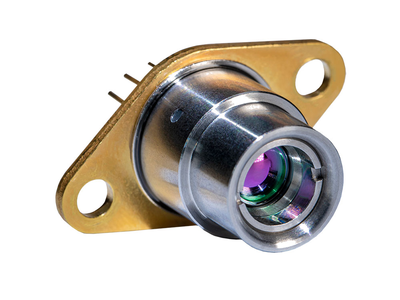

DFB interband cascade lasers at 5184 nm and 5263 nm are used for nitrogen oxide detection. Please have a look at the key features, specifications and applications.
|
parameters
|
symbol
|
unit
|
minimum
|
typical
|
maximum
|
|---|---|---|---|---|---|
|
parameters
operating wavelength (at Top, Iop) |
symbol
λop |
unit
nm |
minimum
|
typical
5184 & 5263 |
maximum
|
|
parameters
optical output power (at λop) |
symbol
Pop |
unit
mW |
minimum
|
typical
6 |
maximum
|
|
parameters
operating current |
symbol
Iop |
unit
mA |
minimum
|
typical
|
maximum
120 |
|
parameters
operating voltage |
symbol
Vop |
unit
V |
minimum
|
typical
5 |
maximum
|
|
parameters
threshold current |
symbol
Ith |
unit
mA |
minimum
25 |
typical
35 |
maximum
55 |
|
parameters
side mode suppression ratio |
symbol
SMSR |
unit
dB |
minimum
|
typical
> 35 |
maximum
|
|
parameters
current tuning coefficient |
symbol
CI |
unit
nm / mA |
minimum
|
typical
0.14 |
maximum
|
|
parameters
temperature tuning coefficient |
symbol
CT |
unit
nm / K |
minimum
|
typical
0.48 |
maximum
|
|
parameters
operating chip temperature |
symbol
Top |
unit
°C |
minimum
+15 |
typical
+20 |
maximum
+40 |
|
parameters
operating case temperature (non-condensing) |
symbol
TC |
unit
°C |
minimum
-20 |
typical
+25 |
maximum
+55 |
|
parameters
storage temperature (non-condensing) |
symbol
TS |
unit
°C |
minimum
-30 |
typical
+20 |
maximum
+70 |





NOx is produced during fuel combustion at power plants and other industrial facilities. When it reacts with SO2 it causes acid rain. For this reason NOx and SO2 emissions are restricted and need to be monitored.
[ 67 ]nanoplus distributed feedback lasers show outstanding spectral, tuning and electrical properties.

Typical spectrum of a nanoplus 5263 nm distributed feedback interband cascade laser

Typical mode hop free tuning of a nanoplus 5263 nm distributed feedback interband cascade laser

Typical power, current and voltage characteristics of a nanoplus 5263 nm distributed feedback interband cascade laser
nanoplus uses a unique and patented technology for DFB laser manufacturing. We apply a lateral metal grating along the ridge waveguide, which is independent of the material system. Read more about our patented distributed feedback technology.
